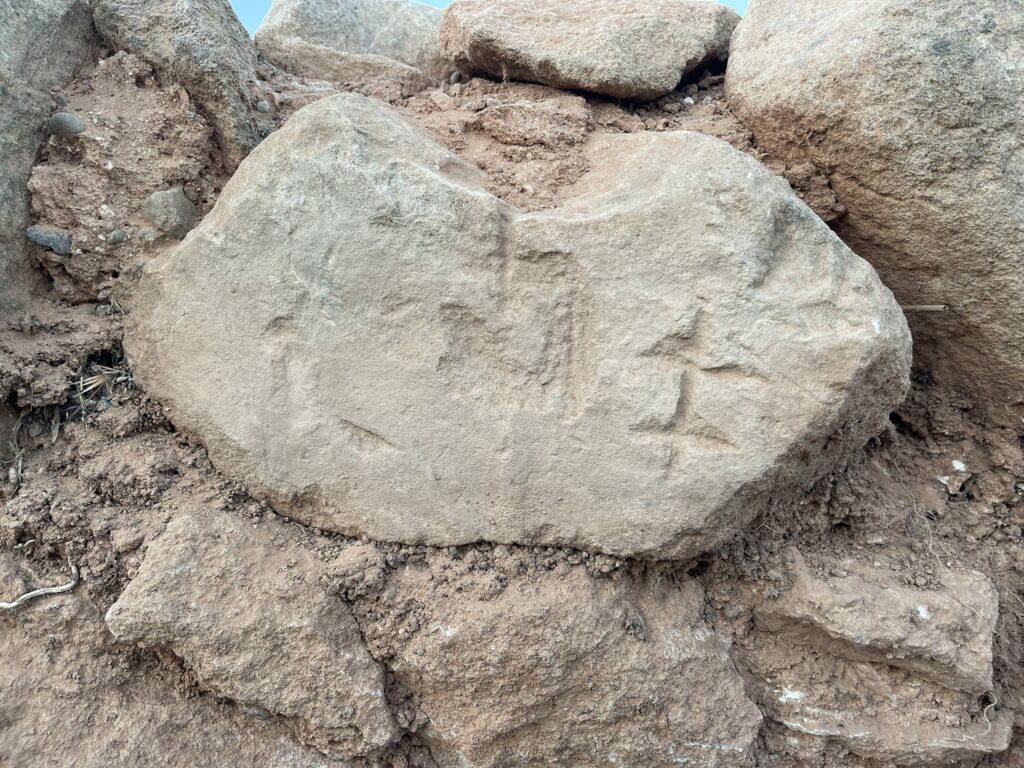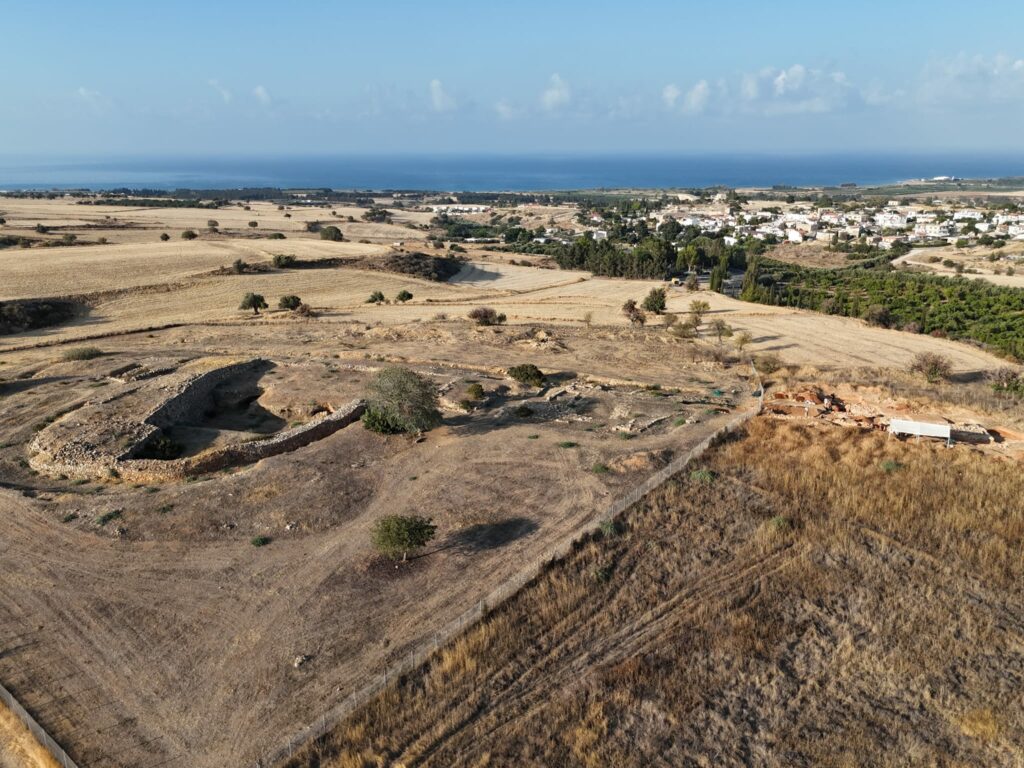Archaeologists have made an unexpected discovery during this year’s excavation season at Kouklia-Martsello in Palaepaphos, unearthing a fragmentary inscription in Cypriot syllabary found embedded in a wall dating to the Cypro-Archaic period.
The Department of Antiquities of the Deputy Ministry of Culture announced the completion of the fourth excavation period for 2024 at the site by the Department of History and Archaeology of the National and Kapodistrian University of Athens (NKUA).

The excavation, funded by NKUA and led by Professor of Archaeology Konstantinos Kopanias, was carried out by a team of 12 undergraduate, postgraduate and doctoral students. The Kouklia community provided accommodation and meals for the students.
The Martsello site has been previously investigated by British archaeologists (1950-55) and a German-Swiss archaeological mission (1966-73, 1985, 1992-95), as well as more recently by the University of Cyprus (2006-08).
Earlier research uncovered part of a monumental wall spanning 168 metres, though its excavation remained incomplete.

The 2024 excavation initially focused on investigating a tunnel that crosses the wall at a depth of 2.3 metres. The careful excavation provided better understanding of the stratigraphy and dating of the wall’s later phases.
New findings support F. Maier’s view that the wall underwent repairs during the Cypro-Archaic and later Cypro-Classical periods.
However, the previous theory suggesting that the tunnels discovered at various points along the wall were constructed in 499/498 BCE during the Persian siege of Palaepaphos was not confirmed.
The purpose of these tunnels remains enigmatic.
The dig also investigated a П-shaped monument north of the wall, facing the sea.
Previously thought to be part of the fortification system functioning as a defensive tower, new excavation evidence suggests it had a religious purpose instead.
Archaeological evidence indicates the structure was founded in the Late Cypriot III period (12th-11th century BCE), fell into disuse during the Cypro-Geometric period, and was later repaired during the Cypro-Archaic period (6th century BCE).
In 2023, two ship engravings were discovered on the exterior of this structure, similar to vessel depictions found at Kition. In 2024, an additional, incomplete ship engraving was discovered.
The NKUA research is being conducted in close cooperation with the University of Cyprus’ Palaipaphos Urban Landscape Project, directed by Professor M. Iakovou. The fifth annual NKUA mission is scheduled for 2025.


